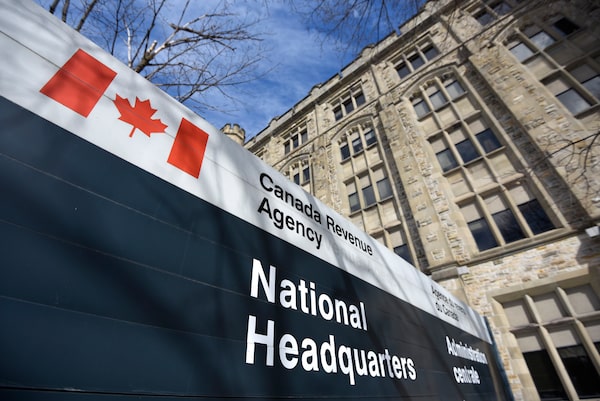
The Canada Revenue Agency says its service standard for processing what’s known as a T3 Trust Income Tax and Information Return is 17 weeks, which is more than eight times longer than the time it takes the CRA to handle individual income tax returns filed electronically.Justin Tang/The Canadian Press
Canadians struggling with a new requirement to file a tax return for a trust this year are in for another unpleasant surprise: They’ll likely have to wait just under four months to hear back from the Canada Revenue Agency about their file.
The tax agency says its service standard for processing what’s known as a T3 Trust Income Tax and Information Return is 17 weeks. That’s more than eight times longer than the time it takes the CRA to handle individual income tax returns filed electronically.
The protracted processing times for trust returns, along with the CRA’s relatively poor track record of meeting even those standards, have long been a concern for Canadians required to file those forms, accountants say. But the issue this year is expected to affect a much larger number of taxpayers owing to a new, sweeping filing mandate that will force many more people to complete a T3 return.
“While many of these returns (especially those required for the first time this year) will have no taxes to pay, taxpayers will still want to know that their filings were received and processed, with no further issues to address,” Hugh Neilson, chair of the Small and Medium Practitioners Tax Committee at Chartered Professional Accountants of Canada, which represents the profession nationwide, said in an e-mail.
“This is one more issue caused by the inordinately broad new filing requirement,” said Mr. Neilson, who is also director of taxation services at Kingston Ross Pasnak LLP.
New federal rules aimed at increasing transparency around trusts have introduced a tax-filing obligation for so-called bare trusts, which often aren’t documented in writing and were previously exempted from the requirement to report to the CRA.
Rob Carrick: A how-to for people caught up in CRA’s confusing new rules for reporting bare trusts
A trust is a legal relationship in which someone called a trustee holds a property for the benefit of a person or persons known as the beneficiaries. In a bare trust the trustee can only act on the instruction of the beneficiary.
Many Canadians who had their names added to a family member’s home title or financial accounts may be deemed to be part of a bare trust, even if they didn’t formally or intentionally set up such a legal structure. Starting with the 2023 tax year, trustees of a bare trust, with few exceptions, are required to disclose information about the trust to CRA through an annual T3 return.
In an e-mail statement to The Globe and Mail, CRA spokesperson Charles Drouin said the agency expects to receive a higher volume of T3 returns now that the obligation to file has been extended to almost all trusts.
That larger number of incoming forms raises the question of whether the tax agency will be able to meet its service standard. Already during the 2022-2023 fiscal year, the agency processed only 75 per cent of trust returns within 17 weeks, short of its goal of doing so 95 per cent of the time.
But Mr. Drouin said the CRA expects its performance to improve. “As of the end of December, 2023, 89 per cent of T3 trust returns were processed within the service standards. We anticipate that this percentage will increase for the next filing season.”
The agency has been automating more of its trust-return processing, including by recently enabling electronic filing for all such returns, he added.
Still, Mr. Neilson worries the CRA could take even longer on average to handle trust returns if more taxpayers send in T3 paper files this tax season. Canadians who decide to fill out the paperwork on their own instead of through a tax preparer may be more likely to use pen and paper, he said.
Many Canadians are struggling to find professional help with their trust returns as the new filing requirements have created a significant additional workload for accountants at an already busy time of the year.
Some taxpayers are also balking at the price tag of getting expert assistance, which can easily cost hundreds of dollars. And Mr. Neilson said he’s not aware of any retail tax software that would help Canadians file their trust returns.
The cutoff for submitting a T3 this tax season is April 2. However, the CRA recently announced it won’t apply penalties for 2023 bare trust returns it receives after that deadline except in cases of egregious gross negligence.
 Erica Alini
Erica Alini